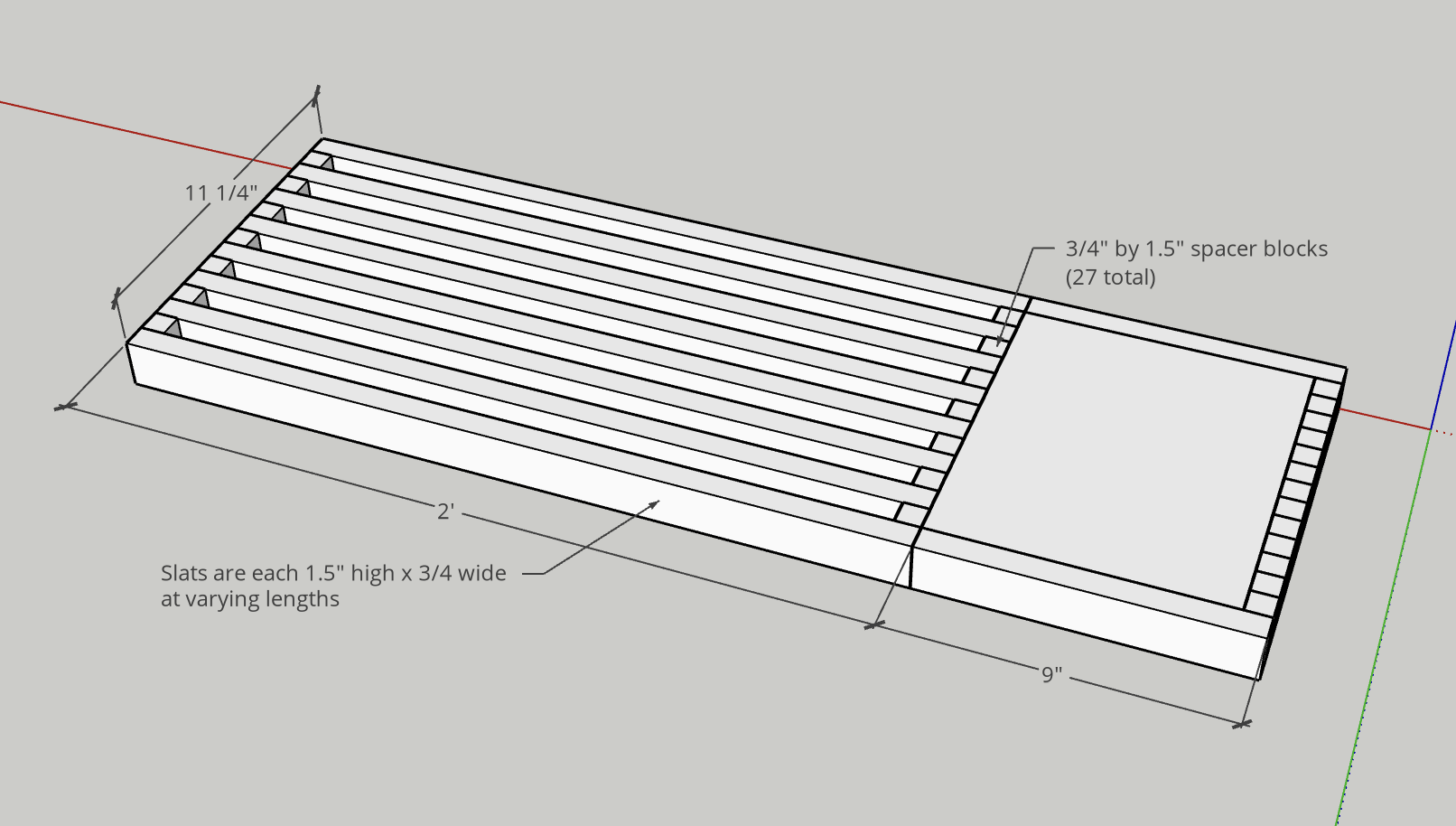Modern Plywood Coffee Table
Build a modern plywood DIY coffee table inspired by the famous Herman Miller Nelson bench
In this project I build a DIY coffee table with plywood and 3 simple tools: a circular saw, drill, and router. I leaned into the exposed plywood aesthetique and highlighted the edge grain of Europly maple plywood. The coffee table’s slat design was inspired by the famous Herman Miller Nelson platform bench.
Tools
The tools, hardware and jigs needed to complete this project. This is not an exhaustive list, but I linked the tools I felt were most critical to the project. Things like clamps, sandpaper, drill bits etc, aren’t included.
I linked the items I used for this project, but brand really doesn’t matter all that much. For some of the items below (especially consumables such as glue, screws, and finishes), you’ll probably find them for cheaper at your local home center.
If you don’t already have one, a circular saw crosscut jig is absolutely essential for this project. It’s also a good investment if you do a lot of woodworking without a table saw.
Power tools
Jigs
Circular saw crosscut jig (you can also make your own)
3/8” Dowel drilling jig
Pocket-hole jig
Hardware
Pocket-hole screw set
3/8” wooden dowels
Finishes and glues
Clear 2-part epoxy
Wood glue
Wipe-On Poly (Satin)
As an Amazon Associate I earn from qualifying purchases.
SketchUp Model

Dimensions
The exact dimensions of this coffee table are not important. You can make the table wider by adding more slats, and you can make the table longer by extending the slat length, or by extending the flat table-top’s length.
However, I would recommend sticking with the 3/4” dimension on the spacer blocks as wider blocks looked chunky.
Construction method
This drawing reflects the reality of how the piece came together for me: I did not have an offcut long enough to span the entire length of the table (2’ 9”) and thus needed to do this project in two halves. I built a 2’ slat section and a 9” flat section, then joined them together with dowels, pocket hole-screws, and epoxy. If you do this project, I recommend not taking this approach and instead sourcing a piece of wood that is as long as the table is wide.
 I'm a tech professional (ex-Amazon) with experience including software engineering, and management. Currently living in NYC.
I'm a tech professional (ex-Amazon) with experience including software engineering, and management. Currently living in NYC.  Play video
Play video